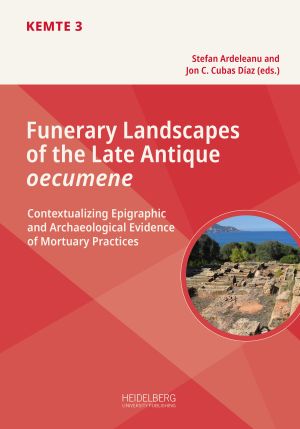Zitationsvorschlag
Lizenz (Kapitel)

Dieses Werk steht unter der Lizenz Creative Commons Namensnennung - Weitergabe unter gleichen Bedingungen 4.0 International.
Identifier (Buch)
Veröffentlicht
Burying at Corinth in Late Antiquity
Evidence from the Late 5th to the Early 7th Century
Abstract Corinth possesses one of the most extensive bodies of archaeological evidence for Late Antique burial practices within the territory of modern Greece. This paper examines the burials of the late 5th to early 7th c. AD, a time of major urban and religious change. Throughout much of this period, land near Corinth’s old northern cemetery remained in heavy use for burial, while a new, contracted Late Antique city wall drew graves, often in small clusters, to its periphery. Two 6th c. AD cemetery basilicas attracted burials of the Christian elite, while additional holy sites might be associated with the graves of a broader spectrum of society. Elements of the mortuary sphere of the 5th c. AD endured, with modifications, to the early 7th c. AD. Ceramics, which are usually to be associated with the graveside anointing of the body, were deposited in less than half of graves, and in the 6th c. AD the lekythos became one of the most frequently deposited vessels alongside pitchers. Lamps continued to be widely employed at the funeral and in subsequent commemoration. Vaulted chamber tombs, constructed using masonry or rock-cut, became a popular, and costly, tomb type from the 6th to early 7th c. AD, joining the cist and tile graves already in use. Corinth’s epitaphs, which were usually produced for built or rock-cut tombs, are distinctive in the details of tomb purchase sometimes included, and served largely as statements of ownership of mortuary real estate. For epitaphs and, to a lesser degree, the use of rock-cut tombs, a Corinthian influence is visible within the northeast Peloponnese. More broadly, Corinth compares well in its mortuary traditions to cities throughout the province of Achaea, while standing apart from most smaller communities in the wide range of its tomb types and the presence of an upper level of highly ornate tomb construction.
Keywords Corinth, Greece, Early Byzantine cemeteries, mortuary archaeology






